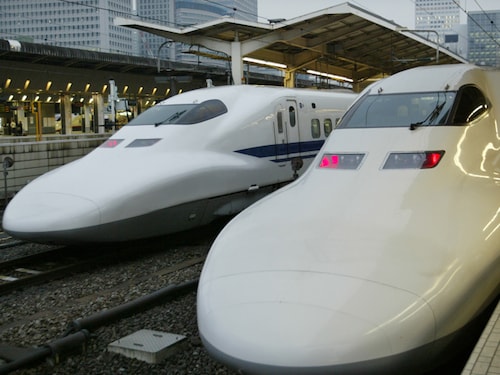Runaway Train
High-speed trains could be the Indian Railways’ answer to low-cost airlines


It’s 7 a.m. on a Monday morning and you are in Amritsar. You’ve to get to Delhi for an important business meeting at 10 a.m. But, there are no flight tickets available and the drive will take you at least eight hours. What do you do? You walk into the Amritsar railway station and buy an early morning high-speed train ticket to Delhi. You board the train at 7:30 a.m., read your financial daily, eat breakfast and viola! You are in Delhi at 9 a.m.
A pipedream? Not if the Indian Railways has its way. The railways have commissioned feasibility studies for running high-speed trains between Delhi-Chandigarh-Amritsar and Mumbai-Pune-Ahmedabad. The railway ministry has already received an interim report from the appointed survey agency for the Mumbai line, while the contract for the Delhi train is expected to be handed out soon. The carrying capacity of each high-speed train is expected to be around 600 with at least five trips per day on both lines.
The high-speed trains will move at 350 kmph, the same speed at which China Railway’s trains hurtle between the cities of Beijing and Tianjin. This could change the way people live and businesses function. Mumbai-Pune will be done in a little over half an hour, compared to over three hours now. People living in Delhi and Amritsar will be covered in one and a half hours. The IT sector in Mohali, Gurgaon and Noida will get a boost.
However, this connectivity will come at a price. Preliminary estimates suggest that the cost of constructing a high-speed railway line and acquiring trains to run on them would be in the range of Rs. 70 crore to Rs. 100 crore per km, translating to at least Rs. 37,000 crore for a Mumbai-Ahmedabad line. To recover the high cost, tickets would have to be priced at roughly Rs. 5 per km — so, a Delhi-Amritsar one-way trip would cost about Rs. 2,000.
The Railways are targeting budget and aspiring airline travellers, high value rail passengers and car owners. A preliminary study commissioned by the Railway Board on the market for premium class rail travel showed that the Delhi-Sonepat route, which is on the way to Chandigarh, accounts for close to 20,000 air-conditioned cars everyday. “Many of these car owners would prefer to travel by rail if it can take them to their destination within a third of the journey time,” says a railways official.
The most promising segment comprises passengers who travel in the air-conditioned coaches of the Indian Railways. There are 77 million such passengers and while they make up only 1 percent of the total passenger traffic, they generate over Rs. 5,000 crore a year.
Some part of this 77 million will eventually graduate to becoming airline travellers. By bringing in high-speed trains, this transition can be arrested. Even US President Barack Obama thinks so. “Imagine boarding a train in the centre of a city — no racing to an airport and across a terminal, no delays, no sitting on the tarmac, no lost luggage, no taking off your shoes,” Obama said, describing his vision for high-speed rail travel in April. It is hard to disagree with his vision.
First Published: Nov 05, 2009, 08:20
Subscribe Now(This story appears in the Dec 13, 2013 issue of Forbes India. To visit our Archives, Click here.)